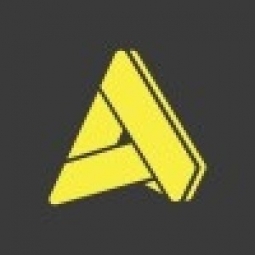公司规模
Large Corporate
地区
- Europe
国家
- Ireland
产品
- Aptean Respond
实施规模
- Enterprise-wide Deployment
影响指标
- Productivity Improvements
- Customer Satisfaction
技术
- 应用基础设施与中间件 - 数据交换与集成
适用行业
- 医疗保健和医院
适用功能
- 质量保证
服务
- 系统集成
关于客户
儿童大学医院 Temple Street 成立于 1872 年,是一家儿科急诊医院,长期以来一直为都柏林北部城市和郡提供服务。它还提供区域和全国的二级和三级转诊和护理服务。急诊部每年接诊 50,000 人次,是该国最大的急诊部之一,也是全国最大的儿科急诊部。该医院是国家遗传代谢疾病中心,并运营国家筛查实验室,该实验室可筛查所有新生儿是否患有一系列遗传疾病。主要专科包括新生儿和儿科外科、肾脏病学(包括肾移植)、神经内科、发育儿科和整形外科。该医院拥有全方位的临床和辅助医疗服务,为儿科急诊医院提供支持。近 1,100 名员工致力于为患病儿童及其家人提供优质护理服务。
挑战
儿童大学医院 Temple Street 是一家儿科急症医院,在提升质量和管理风险方面面临挑战。医院旨在通过报告不良事件和投诉来提高患者护理质量,从而使所有员工能够承担有效风险管理的责任。然而,在医院环境中有效管理风险和提升质量与安全所面临的巨大挑战促使 Temple Street 扩展其 Aptean Respond 系统,通过在整个医院范围内推广,使其在病房和部门层面均可使用。
解决方案
八年前,Temple Street 开始使用 Aptean Respond 软件根据爱尔兰的 FOI 法案管理投诉和请求。随后,它开始在提升质量和管理风险方面遇到挑战。他们决定升级和扩展 Respond CenterPoint 系统,并将其推广到整个组织。Temple Street 随后添加了 Respond TouchPoint 和 Respond Intelligence,以满足医院内各个部门的需求。第一个练习是采用投诉和 FOI 数据库的模板,并开发常规访问数据库、事件报告数据库和索赔数据库。然后,他们将五个数据库合并为一个,升级 Respond CenterPoint 系统,添加 Respond TouchPoint 和 Respond Intelligence。该项目的第二部分,也是 Temple Street 废物管理和质量计划的一部分,是通过在组织内联网上推出全院在线报告系统,消除与事件报告和记录投诉或信息请求相关的手动流程。
运营影响

Case Study missing?
Start adding your own!
Register with your work email and create a new case study profile for your business.
相关案例.

Case Study
Hospital Inventory Management
The hospital supply chain team is responsible for ensuring that the right medical supplies are readily available to clinicians when and where needed, and to do so in the most efficient manner possible. However, many of the systems and processes in use at the cancer center for supply chain management were not best suited to support these goals. Barcoding technology, a commonly used method for inventory management of medical supplies, is labor intensive, time consuming, does not provide real-time visibility into inventory levels and can be prone to error. Consequently, the lack of accurate and real-time visibility into inventory levels across multiple supply rooms in multiple hospital facilities creates additional inefficiency in the system causing over-ordering, hoarding, and wasted supplies. Other sources of waste and cost were also identified as candidates for improvement. Existing systems and processes did not provide adequate security for high-cost inventory within the hospital, which was another driver of cost. A lack of visibility into expiration dates for supplies resulted in supplies being wasted due to past expiry dates. Storage of supplies was also a key consideration given the location of the cancer center’s facilities in a dense urban setting, where space is always at a premium. In order to address the challenges outlined above, the hospital sought a solution that would provide real-time inventory information with high levels of accuracy, reduce the level of manual effort required and enable data driven decision making to ensure that the right supplies were readily available to clinicians in the right location at the right time.

Case Study
Gas Pipeline Monitoring System for Hospitals
This system integrator focuses on providing centralized gas pipeline monitoring systems for hospitals. The service they provide makes it possible for hospitals to reduce both maintenance and labor costs. Since hospitals may not have an existing network suitable for this type of system, GPRS communication provides an easy and ready-to-use solution for remote, distributed monitoring systems System Requirements - GPRS communication - Seamless connection with SCADA software - Simple, front-end control capability - Expandable I/O channels - Combine AI, DI, and DO channels

Case Study
Driving Digital Transformations for Vitro Diagnostic Medical Devices
Diagnostic devices play a vital role in helping to improve healthcare delivery. In fact, an estimated 60 percent of the world’s medical decisions are made with support from in vitrodiagnostics (IVD) solutions, such as those provided by Roche Diagnostics, an industry leader. As the demand for medical diagnostic services grows rapidly in hospitals and clinics across China, so does the market for IVD solutions. In addition, the typically high cost of these diagnostic devices means that comprehensive post-sales services are needed. Wanteed to improve three portions of thr IVD:1. Remotely monitor and manage IVD devices as fixed assets.2. Optimizing device availability with predictive maintenance.3. Recommending the best IVD solution for a customer’s needs.

Case Study
HaemoCloud Global Blood Management System
1) Deliver a connected digital product system to protect and increase the differentiated value of Haemonetics blood and plasma solutions. 2) Improve patient outcomes by increasing the efficiency of blood supply flows. 3) Navigate and satisfy a complex web of global regulatory compliance requirements. 4) Reduce costly and labor-intensive maintenance procedures.

Case Study
Cloud-based healthcare solution for Royal Philips
Royal Philips wanted to launch its cloud-based healthcare solution HealthSuite Digital Platform in China to deliver services to help cope with challenges related to urbanization and population growth. Philips wanted to achieve this goal by combining mobile, cloud computing and big data technologies. To bring this platform and product to market, Philips required cloud computing and local technical service capabilities in China, in addition to a flexible IT infrastructure that could handle user requests.








